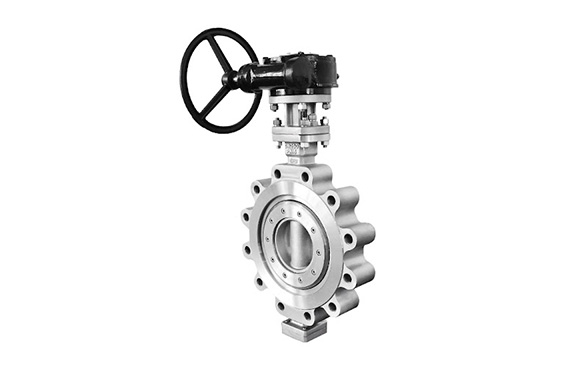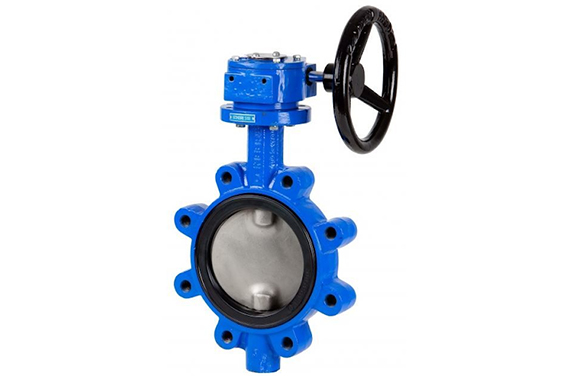There are several industrial valves on the market. Different kinds of industrial valves work in different ways. Some control the flow of media, while others isolate it. Others control the media’s orientation. The different types of valves differ in style and size as well. There are many types of butterfly valves. Lug Butterfly Valves are one of the most common types of butterfly valves. This article talks about the characteristics, advantages and disadvantages.
What Is A Butterfly Valve?
Butterfly valves are also called quarter-turn valves. They are quite popular in the industrial valve industry. The valve opens or shuts when the metal disk part of its construction is spun a quarter round. The disk, called the “butterfly,” is linked to a rod.
When the butterfly valve is fully opened, the disc spins a quarter turn, permitting practically unfettered fluid flow. Turning the butterfly (disk) to shut the valve prevents fluid flow. This is because the disc is always perpendicular or parallel to the flow, causing a pressure drop in the valve.
What Is A Lugged Type Butterfly Valve?

The lug butterfly valve is similar to a three-piece ball valve in the sense that one end of the valve may be removed without affecting the opposite side. This may be accomplished by employing threaded inserts, flanges, and two sets of lugs that do not need nuts since each flange has its bolts. It’s also worth noting that the operator doesn’t have to turn off the whole system to clean, check, repair, or replace a single butterfly valve. The butterfly valves typically have a short circular body, a round disk, a shaft, and metal or soft seats.
Applications of lug type butterfly valve
The lug butterfly valves find application in numerous purposes. Some of them are discussed as below:
- Lug type butterfly valves are employed in a variety of fluid services and also work well in slurry applications. They have applications in liquids, steam, cryogenics, cooling water, air, gases, firefighting, and vacuum services.
- These industry butterfly valves are utilized in many sectors, including high-pressure and temperature applications.
The Benefits of a Lugged Butterfly Valve

Lugged butterfly valves are one of the most flexible valve designs available. They may be utilized in various applications and have several benefits over conventional valves. Lugged butterfly valves have numerous advantages. Some of them are discussed as below:
- They are very tough and can tolerate extreme pressure and temperature.
- They provide a tight seal and are less prone to leak than other valve types.
- They provide several customizing choices.
- They have a small footprint, making them perfect for usage in small locations.
The Drawbacks of a Lugged Butterfly Valve
Just as nothing is perfect, lugged butterfly valves also have some drawbacks. Some of them are mentioned below:
One of the most common varieties of butterfly valves on the market is the lugged butterfly valve. However, before making a purchase, people should be informed of certain downsides of utilizing this kind of valve.
- They cost more than other varieties of butterfly valves.
- Because of their enormous size, they are more difficult to install.
- They are more difficult to maintain than other varieties of butterfly valves.
- They are less adaptable than other varieties of butterfly valves.
How To Choose The Best Lug Butterfly Valve?
There are several varieties of high quality butterfly valves on the market, each with its own benefits and drawbacks. So how to determine which one is best? Here are the five important variables to consider when selecting a butterfly valve below.
Material
The first thing to examine is the material of the valve. Lug butterfly valves are available in a range of materials, including stainless steel and aluminum, as well as PVC and PP plastics. Each material has benefits and cons, so selecting the best one for the purposes is critical.
Temperature
Another important thing to consider is the temperature range that the valve can withstand. Some materials are only appropriate for low-temperature applications, but others can withstand high-temperature fluids. Choose a valve that can withstand the temperatures that are anticipated to be experienced.
Pressure
The third element to examine is the valve’s pressure rating. Lug butterfly valves come in a variety of pressure ratings, so pick one that can withstand the pressures that are anticipated to be experienced.
Type Of Connection
The fourth aspect to examine is the kind of connection on the valve. Threaded connections are used on certain butterfly valves, whereas flanged connections are used on others. Select the connection type that is compatible with the system.
Ease Of Operation
The last element to consider is how the valve will be operated. Some lug butterfly valves are controlled manually, while others are automatically or electrically operated. Select the actuation type that is most suited to the application.
Why Buy Lug Type Butterfly Valves From Dombor?
Dombor is a prominent producer of various types of valves, and its products are highly effective, of high quality, and provide outstanding results. Dombor lug type butterfly valves have the following characteristics:
1. Lug style butterfly valves have a simple design and are easy to operate.
2. The designs are innovative and can be used for many industrial activities.
3. Lug type butterfly valves are cost-effective and are automated for simplicity of use.
4. The valves are of high quality and are quite durable.
Bottom Line
The lugged butterfly valve butterfly valves are one of the most commonly used valves. The lug butterfly valve has its own set of advantages and disadvantages. However, it has high durability and thus finds application in numerous purposes. Select the one that meets the needs and requirements of the projects. Please contact us to buy high-quality and dependable valves from a reputed lug butterfly valve manufacturer.









